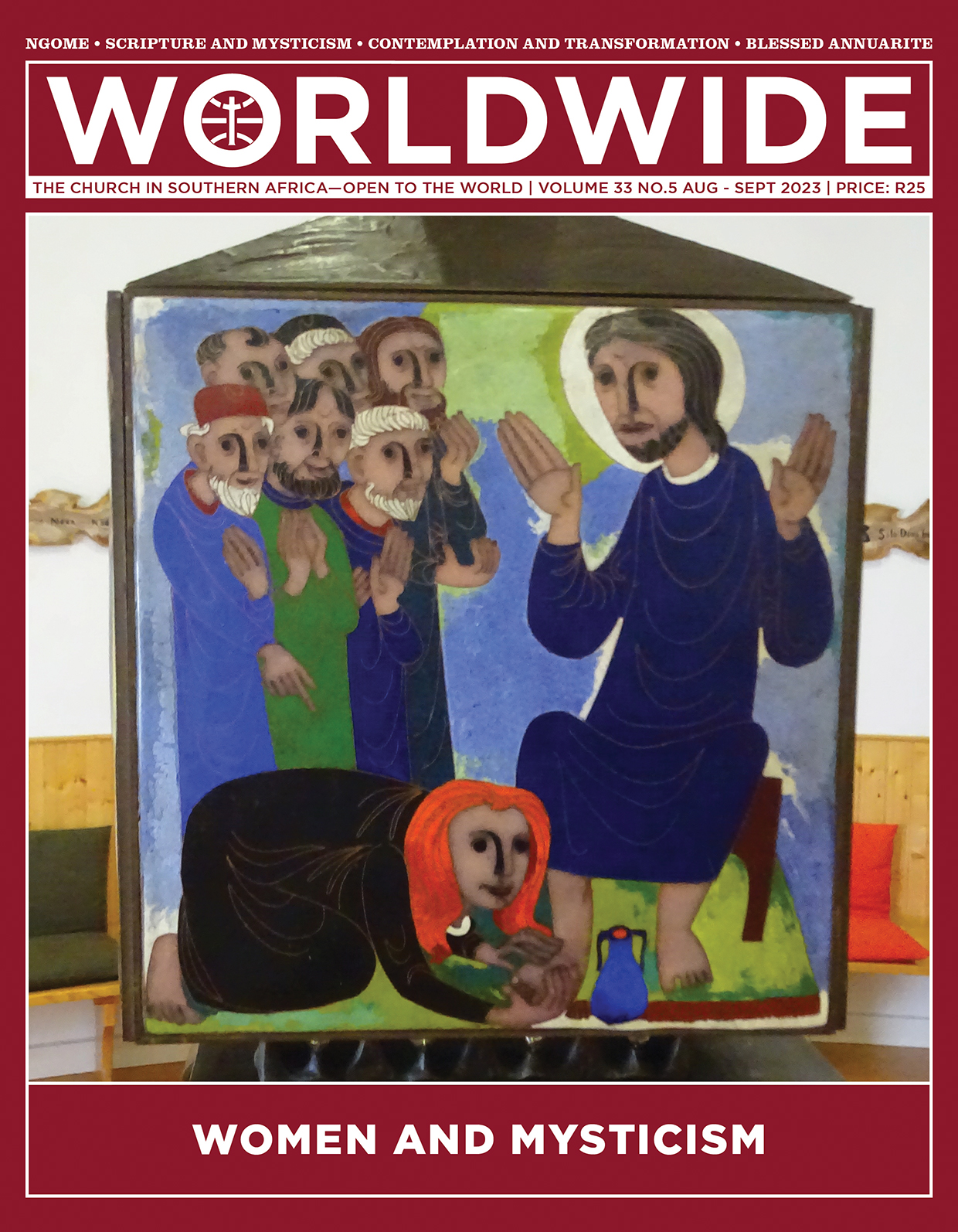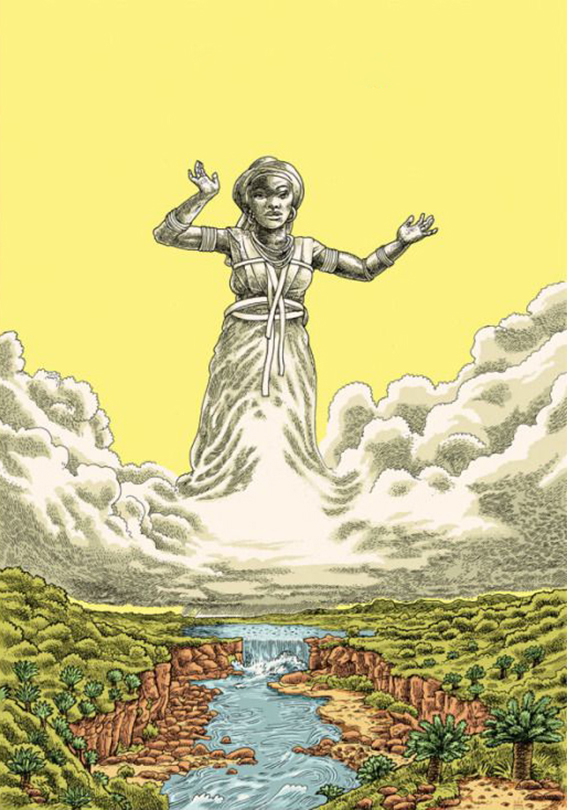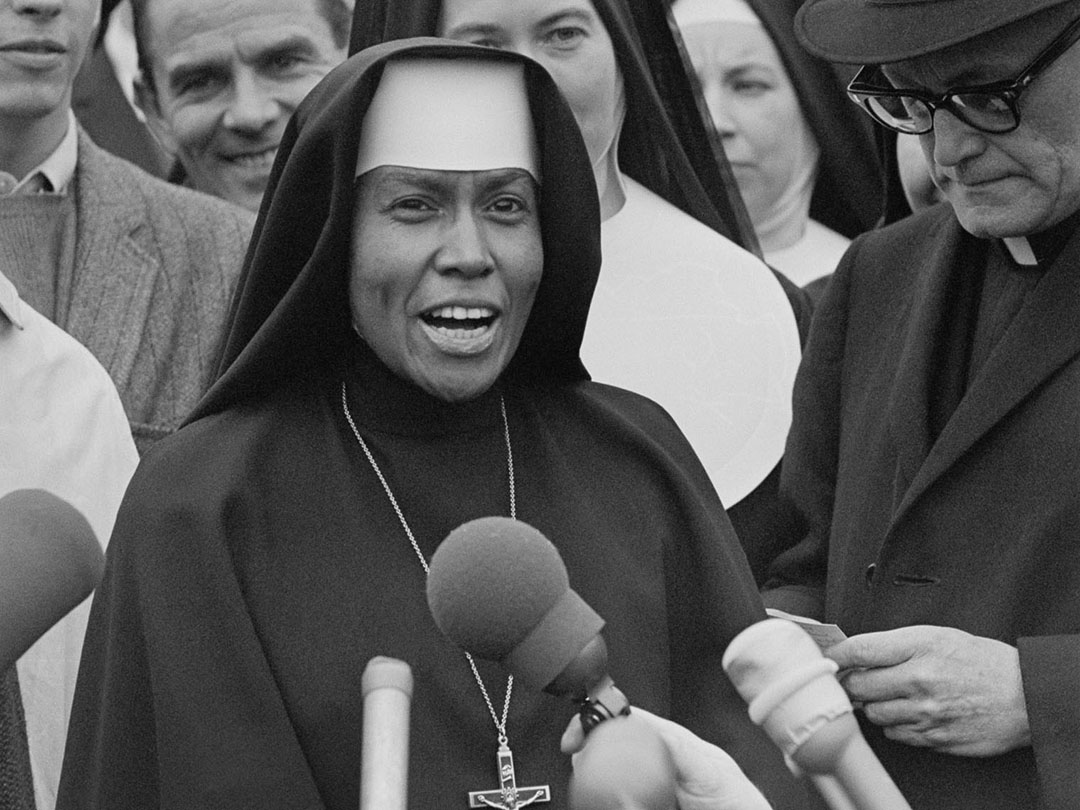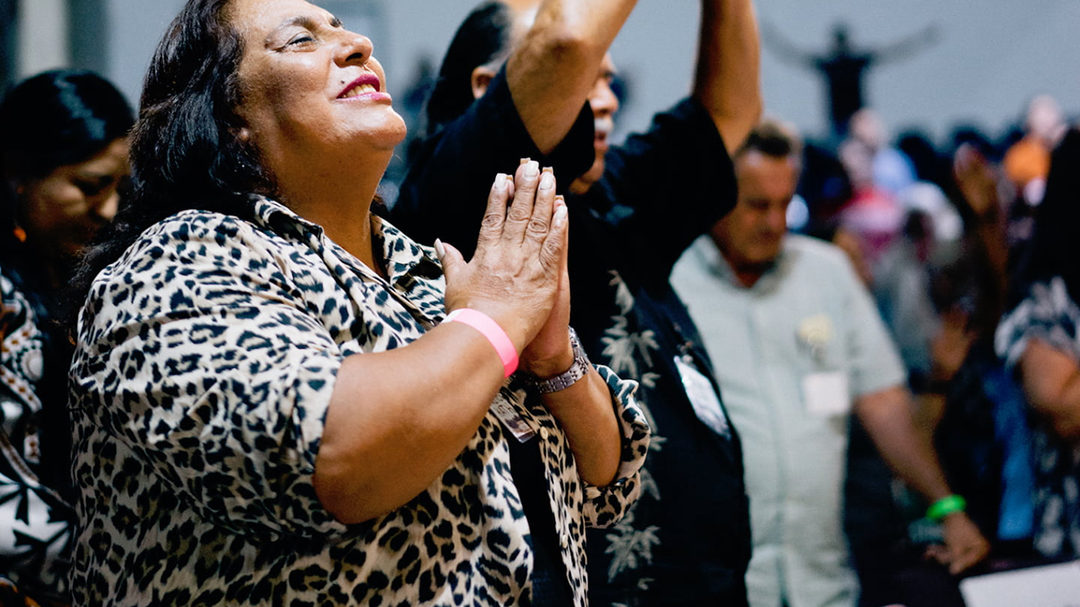
WOMEN AND MYSTICISM
Mary anoints Jesus’ feet at Bethany (John 12:1–8). The scene is part of a series which represents passages of women with a prominent role in the Scripture. The decorations are placed around the sides of the Tabernacle in the Chapel of Meditation at the University of Mystics in Avila, Spain.
Mary listens to and manifests her love for Jesus. Contemplation becomes the mesh in which her Spirit-led actions find their meaning and support.
RADAR

A Mystical African Legend
BY Ruby Lilaowala
FROM MY three-week visit to South Africa in 2000 one fascinating story remained always with me, about a woman with great supernatural powers. Standing upon a hill, head back, emerald-eyed sceptre in outstretched hands, she’d command that it rain, and it would! If she wished for the rains to stay away, they would!
Though she dominated a vast region of warrior tribes, she didn’t have a single soldier under her command. The mightiest of chiefs obeyed her every wish. She had white skin and blue eyes. She never seemed to age. She stayed young and beautiful and was said to be at least a hundred years old when she mystically disappeared. All of this defies reason. Can any of it be possible or is it just legend? Millions of people in Africa believe it to be true. The famous English author, H. Rider Haggard has immortalised her in his African classic, She, later made into a Hollywood film.
The saga of the Rain Queen begins with her birth in a Bedouin caravan camp, on the southern fringes of the Sahara Desert. This event, a couple of hundred years ago, was marked by a torrential rainstorm in the dry Sahara. It hardly ever rained there before. More remarkably, the child had white skin and eyes of the deepest blue! She was named Shareen. She was barely in her teens, when the camel train on which her father was a driver, was ambushed by a band of Bakwebo warriors, near Lake Chad, northern Central Africa. The caravan was looted and everyone on it slaughtered, except Shareen. She was carried off to become another of the Chief’s many wives.
Less than a year later, the Chief mysteriously died. Soon, Shareen, now renamed Mujaji, became the senior wife of the new Chief. But very shortly, the new husband also passed on, for reasons not explained, and she became the Chief of the Bakwebo people. She bestowed a new title upon herself: ‘She Who Must Be Obeyed’. She ruled the Bakwebo for almost 80 years, during which her influence spread immensely. The source of her power was known far and wide as ‘The Transformer of the Clouds’.
During this period, Central Africa erupted in turmoil, triggering a southward migration of millions. The Bakwebo people were also among them, but by then, they had lost all their fighting strength. The journey may have lasted ten to thirty years, we will never know. The route taken by the Bakwebo led them down through, what is today, the Central African Republic, DRC Congo and Angola, right down to where they crossed the Limpopo River and eventually arrived in the Wolowedu Mountains of the former Transvaal State, now Limpopo, where the Bakwebo established their new home. Mujaji chose a solitary mountain, Levanga, upon which to build her palace.
Levanga became the seat of power for Mujaji, the Rain Queen, Transformer of the Clouds. Her neighbours felt her influence and power. These were powerful tribes, far greater in number and wealth, and each possessed a well-equipped army. Mujaji hardly had any fighting men among her 5 000 people. She had never needed the protection of fighting men and required none of them now. Her weapon was the control of the clouds.
The adjoining kingdoms—Tsonga to the East; Venda to the North: Sotho, Pedi, Swazi and Tswana to the South and West, soon felt the awful consequences of confrontation with Mujaji… lands laid wasted by drought. To appease her and gain her favours of rain, her neighbours brought an endless stream of gifts—gold, cattle and young girls of royal birth. The reason for demanding princesses of royal birth was probably a kind of insurance. Mujaji was shrewd enough to hedge her bets. Should her rain-making powers, for whatever reason, desert her one day, her warlike neighbours would not attack while their Kings’ and Chiefs’ daughters were with Mujaji! So, the gifts flowed in frequently and the Bakwebo people had a new name — ‘Lovdu — the Palace of Offering’.
As ‘Transformer of the Clouds’, Mujaji had no equal, and the locals still believe to this day, that it was because of Mujaji that Eastern Transvaal is such a beautiful place. Even the Swazi rain-bringers, renowned for their skill, were overshadowed by Mujaji’s incredible powers. Word of her talent reached even the Zulu leaders, far to the South, and hundreds of Zulu cattle were often seen being driven to Lovdu, an offering to the great Transformer of the Clouds.
These were also times of great conflict between the powerful nations of the Zulu, Sotho, Shangaan and Tsonga. Although wars raged through the region, the land of Lovdu was carefully avoided. There was no leader, no matter how mighty, who could risk the displeasure of the Great Transformer!
When her power was at its greatest, it suddenly ended! The white man had arrived in South Africa. Wars for supremacy engulfed the region and now Lovdu was no longer immune. The white soldiers were disdainful of Mujaji’s reputed powers and ultimately, Lovdu was overrun. The royal handmaidens were still there when the soldiers stormed into the palace, but there was no sign of Mujaji! She was never seen or heard of, since then. She just disappeared into thin air— just as mysteriously as she had arrived!




